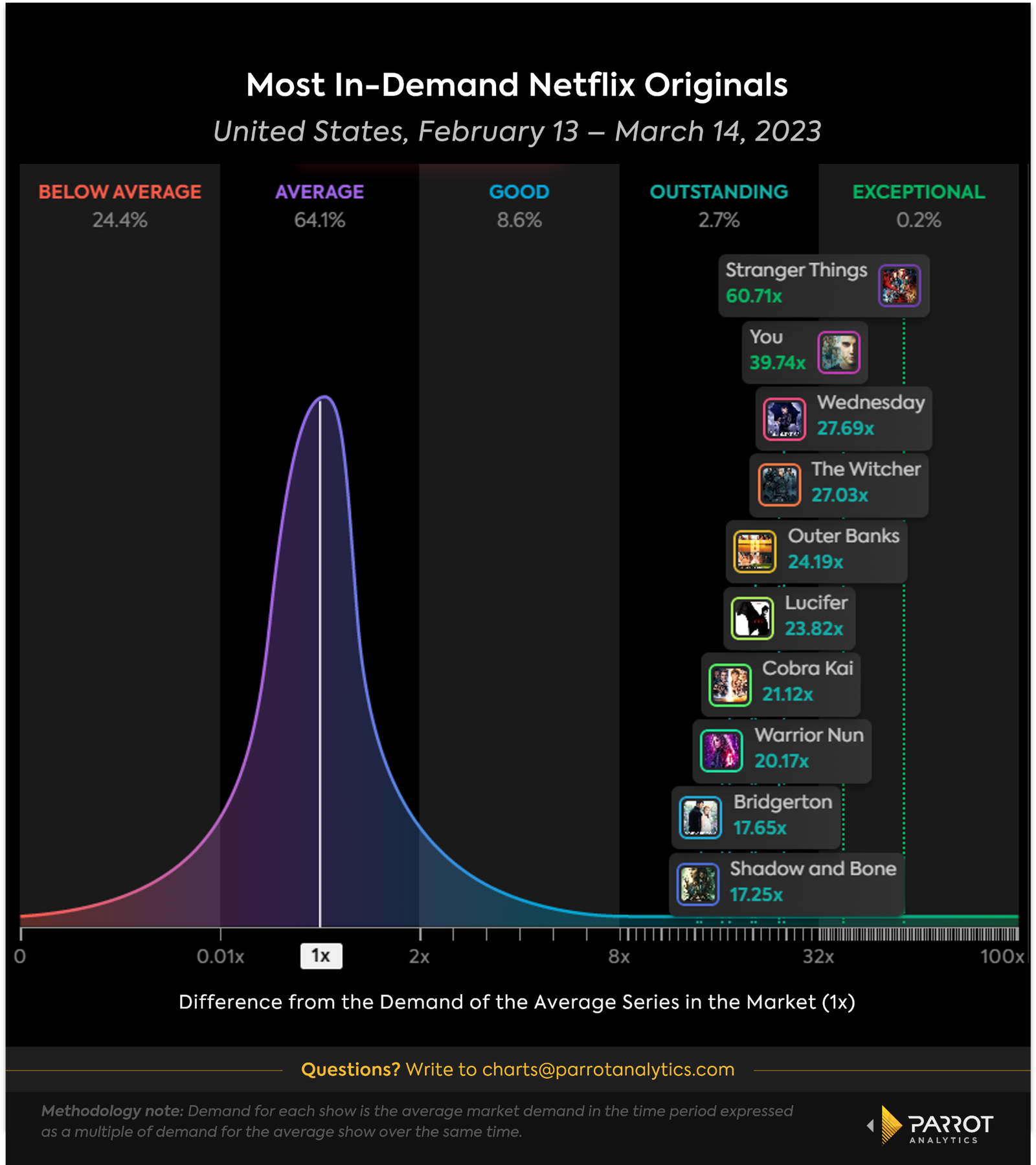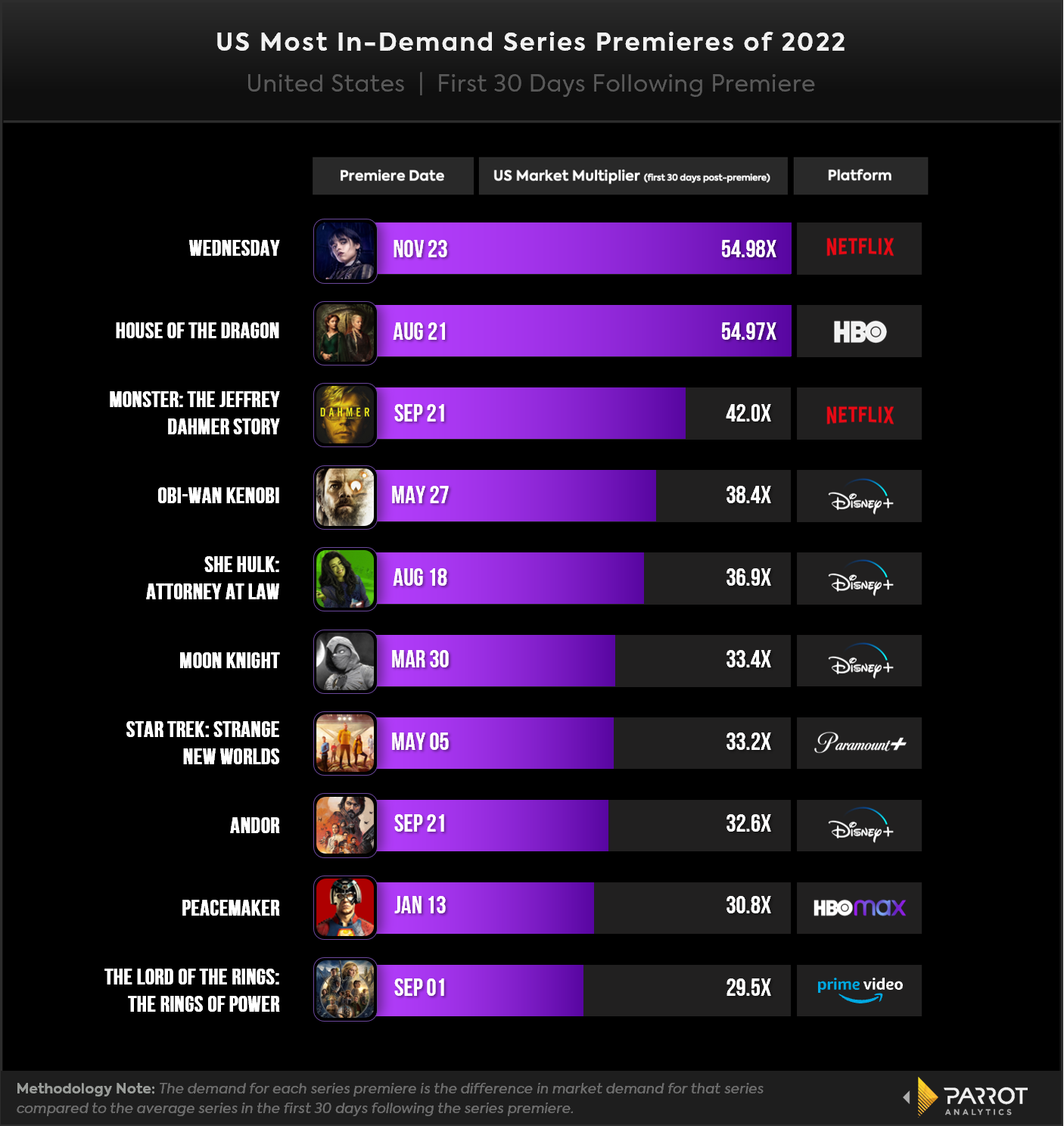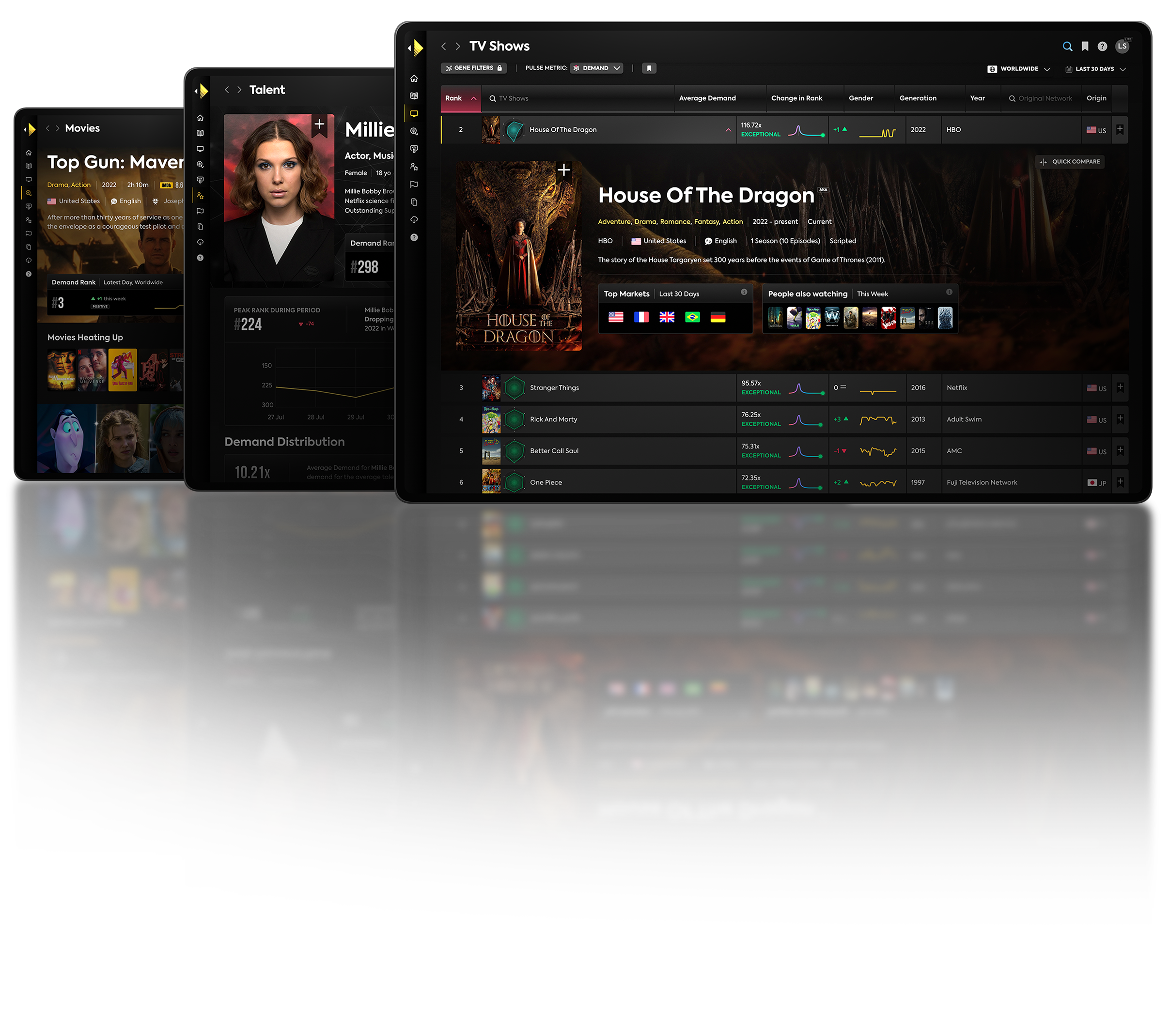The popular Netflix thriller You released the second batch of episodes in its fourth season on March 9th. This brought audiences back to the show a month after the fourth season first premiered on February 9th and helped You become the second most in-demand Netflix original in the last 30 days. In the past month, You had 39.74 times the demand of the average series in the US, meaning it ranked among the top 0.2% of shows.

The only other Netflix original to have higher demand in the last 30 days was Netflix’s biggest original series ever, Stranger Things. Notably, Netflix also changed how the most recent season of Stranger Things was released. Its fourth season was split into two batches of episodes dropped in May and July and allowed the show to dominate attention in the entire middle part of 2022.
These aren’t the only shows where Netflix has broken from its once sacrosanct binge-release model. Ozark, Money Heist, and Lucifer are a few of the platform’s highest profile shows that have gotten the split-season treatment. However, Netflix may actually be behind the curve of this shift in the streaming industry. We have seen an explosion in the number of streaming original series released on a periodic schedule in the past four years. More important, the series that spaced out their episodes rather than dropping them all at once have been more effective at capturing a greater share of audience attention. If we look at the most in-demand new series premieres of 2022, only two of the top ten shows that had the highest demand in their first 30 days dropped all their episodes at once (both were Netflix originals).

The latest season of You is a helpful case study in how Netflix can absorb some learnings from these other periodic release shows to make its series more effective at capturing audience attention. We can see how the move to Netflix following its first season airing on Lifetime was the catalyst that made the show the hit it is today. Demand for the show hit an all time high when its second season first premiered on Netflix (reaching 68 times the average series demand on December 31st 2019).
But demand for new seasons of the show has been falling since then. The peak demand of the last two seasons has hit a lower ceiling each time. The latest season of You peaked sooner and at a lower level of audience demand than the previous two seasons, reaching 55 times the average series demand 2 days after the first tranche of episodes was released.
That’s the bad news. The good news is, if we look at demand for the latest season, the decay rate of demand in the first 27 days has been similar. We can see in the chart that demand from the initial peak tapers off at about the same rate for the past three seasons, which suggests that when presented with half the episodes, audiences don’t seem to be burning through that content at a significantly faster rate.

The even better news about the split season model is that demand for the show peaks again. Demand for You season 4 peaked even higher following its second batch of episodes than it did after its initial premiere. It looks very likely that when we assess this season from a 60 or 90 day perspective it may well have gotten more audience attention than its previous two seasons, just over a longer period of time.
Obviously, stretching out the amount of time that viewers will stay on its platform is the goal for a subscription based service like Netflix. Along with recent moves like cracking down on passwords, Netflix’s shift away from the binge model is another example of how it is looking to maximize the returns on its content investments. If trends continue it wouldn’t be hard to imagine a world where the final season of Stranger Things is parceled out in weekly installments as Netflix tries to squeeze every last drop of audience attention from its most valuable show.



